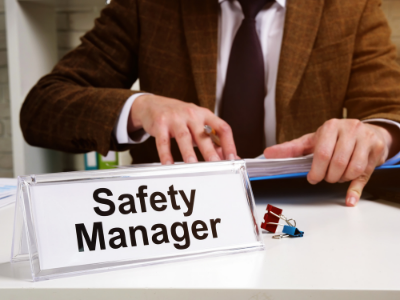
Managing the OSHA Visit: Part 1
“What was that…did you say OSHA is in the Lobby? Was this scheduled? Tell them I’ll be right down.”
When you hear that OSHA is waiting for you in the lobby to perform an unannounced inspection, the first thing that comes to your head might be a 4-letter word that would send your mom running for a bar of soap. No one wants a surprise visit from OSHA, but they happen. And if you’re not prepared, odds are it could cost you big time.
The good news is there are a few easy things you can do to better prepare your entire company for a surprise OSHA audit.
First, you should know that OSHA only has about one compliance officer for every 59,000 workers across the nation and about 2,600 inspectors and consultants to cover over 7 million workplaces. Furthermore, each inspection completed by a compliance officer takes about 22 hours of work. Simply put, OSHA can’t be everywhere. Since OSHA can’t be everywhere, they have criteria for determining where to investigate. If your worksite presents imminent danger, has a high incident rate, or has elicited a worker complaint, you are far more likely to receive a surprise visit. Other factors that increase your likelihood of inspection are referrals from other agencies (ie, EPA, MSHA), being part of a targeted industry that is labeled as being historically “high hazard,” and a recent inspection (follow up inspections are common).
Knowing the odds of an OSHA visit can help an organization determine the urgency with which to address the steps below, but every company should ultimately be prepared for an audit. Should the day come where the OSHA inspector is waiting on you in the Lobby, rest assured that it likely was not “scheduled.” OSHA wants to catch you unaware so they can evaluate your worksite in a #NoFilter light.
Safety Plus, Inc.’s 6 Steps to Prepare for an OSHA Visit:
1. Have a designated greeter in the event of an OSHA visitDo a mock audit. Have an employee or third-party safety company act as a visiting OSHA investigator. Assign employees various roles including a greeter that will welcome the investigator and be able to discuss your organization’s safety program and introduce the investigator to anyone else they may want to talk to.
2. Have a comprehensive safety management program and be able to show proof during an OSHA visitThis should be a no brainer. If you don’t have a comprehensive safety management program, get one. It is the responsibility of the employer to provide a safe workplace for employees. Not only is implementing a safety program ethically necessary, it is also financially beneficial. A safety management system will also provide a tremendous level of benefit if it includes the documentation discussed in the remaining steps. Check out SafetyPlusWeb.com if you have nothing in place.
3. Regularly conduct Safety Audits and maintain records of them to show in the event of an OSHA auditIf you are regularly performing audits of your facility or jobsites to identify and correct hazards, keep these records in a safe and easily-accessible location. Show them off to OSHA! Prove that you regularly evaluate safety and make adjustments for improved safety and compliance. No one is perfect but proving that you systematically identify and proactively correct hazards and behavioral issues will impress the investigator.
4. Train employeesThis tip is two-fold. Yes, train your employees to work safely and avoid injury when encountering hazards at work. But also, train your employees on how to interact with an OSHA investigator. Employees have choices. They can decline to be interviewed or request a lawyer or supervisor to be present during the interviews. Most importantly, make sure your employees understand the gravity of an OSHA audit and behave accordingly.
5. Have safety documents stored and easily accessible for OSHA reviewThe OSHA investigator may ask to see training records for employees, Safety Data Sheets, safety policies and more. All of these should be easily located by multiple employees (especially the employee you designate to be your “OSHA Greeter”). Don’t let one person’s poorly-timed “sick day” submarine your investigation. Having these files hosted in the cloud and accessible from multiple devices is a bonus here.
6. Designate walkaround routes for each area of the facilityIf there is a specific location your OSHA investigator wants to see, take a DIRECT route there! Yes, you should generally be keeping the entire workplace safe, but don’t take a longer route, inadvertently giving a full tour to the investigator, and stumble upon a few extra citations.
The main thing you need to know when preparing for an OSHA visit is this: they can happen at any time. The only way to prepare for an OSHA visit is to always be prepared for one. For more information on OSHA visits and how to best prepare your organization to handle them, check out Safety Plus Inc’s Webinar below, “Managing Unexpected OSHA Visits Part 1: What to do before OSHA arrives,”
Also, be sure to check back for Parts 2 & 3 managing the OSHA visit.
.png)